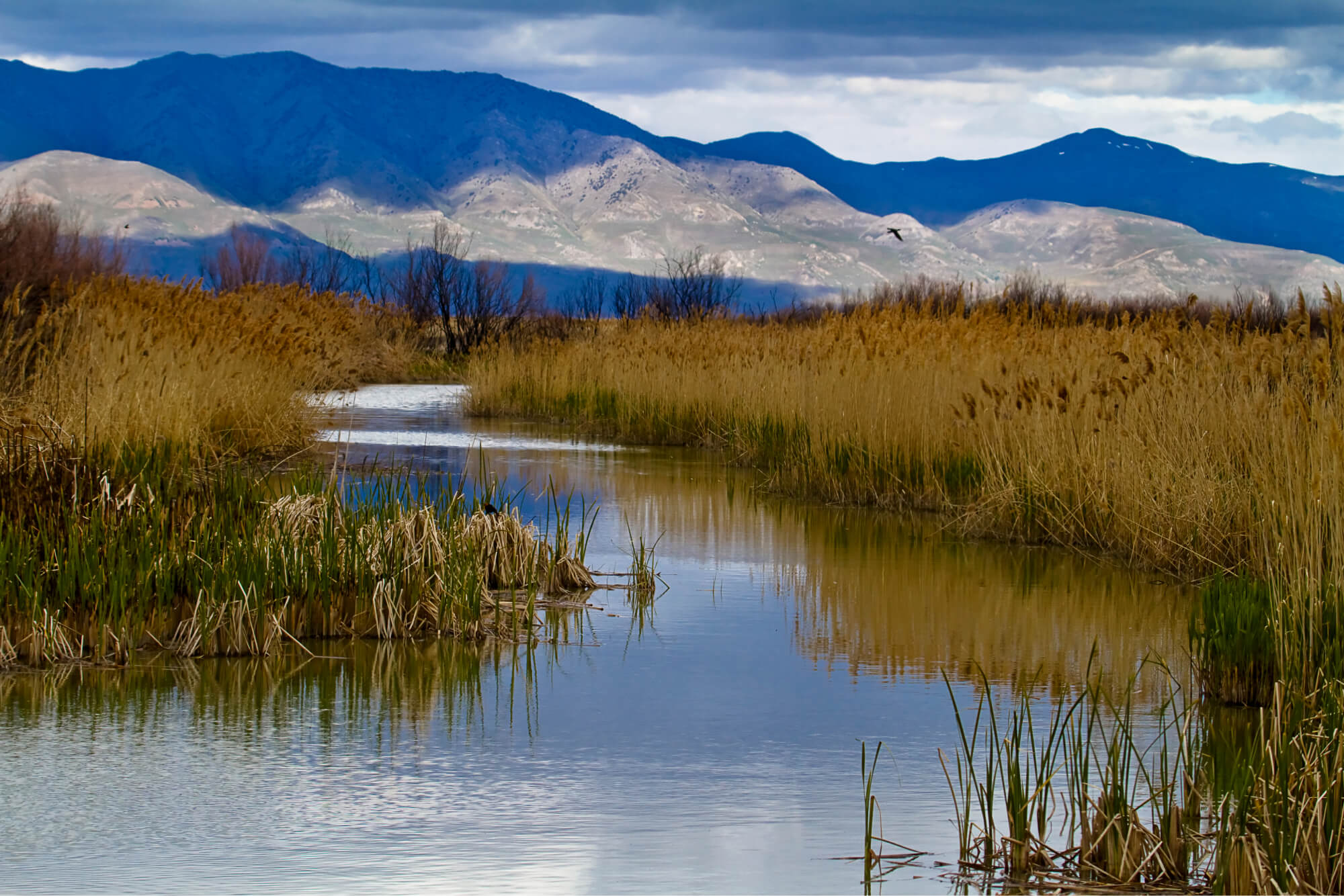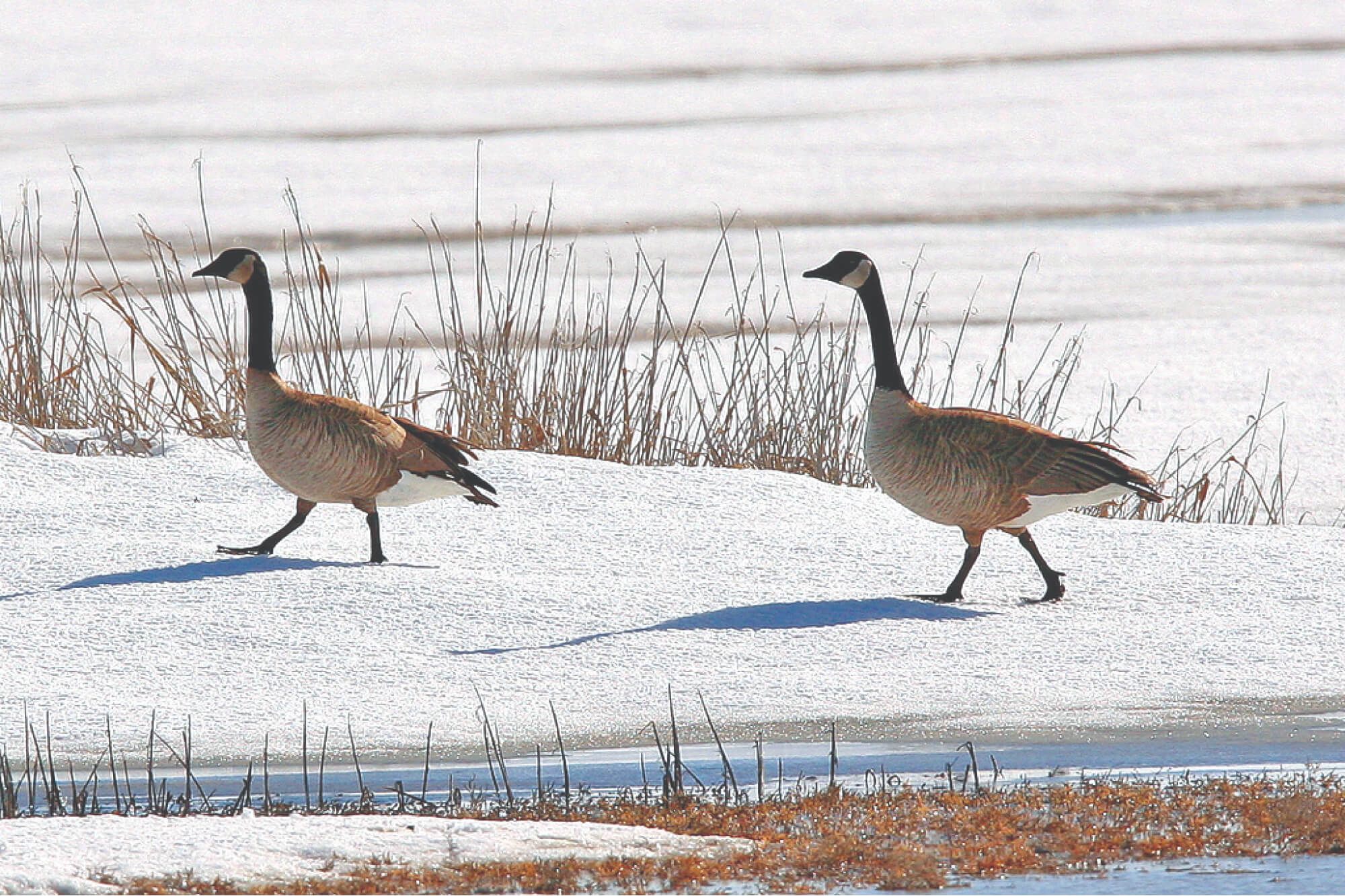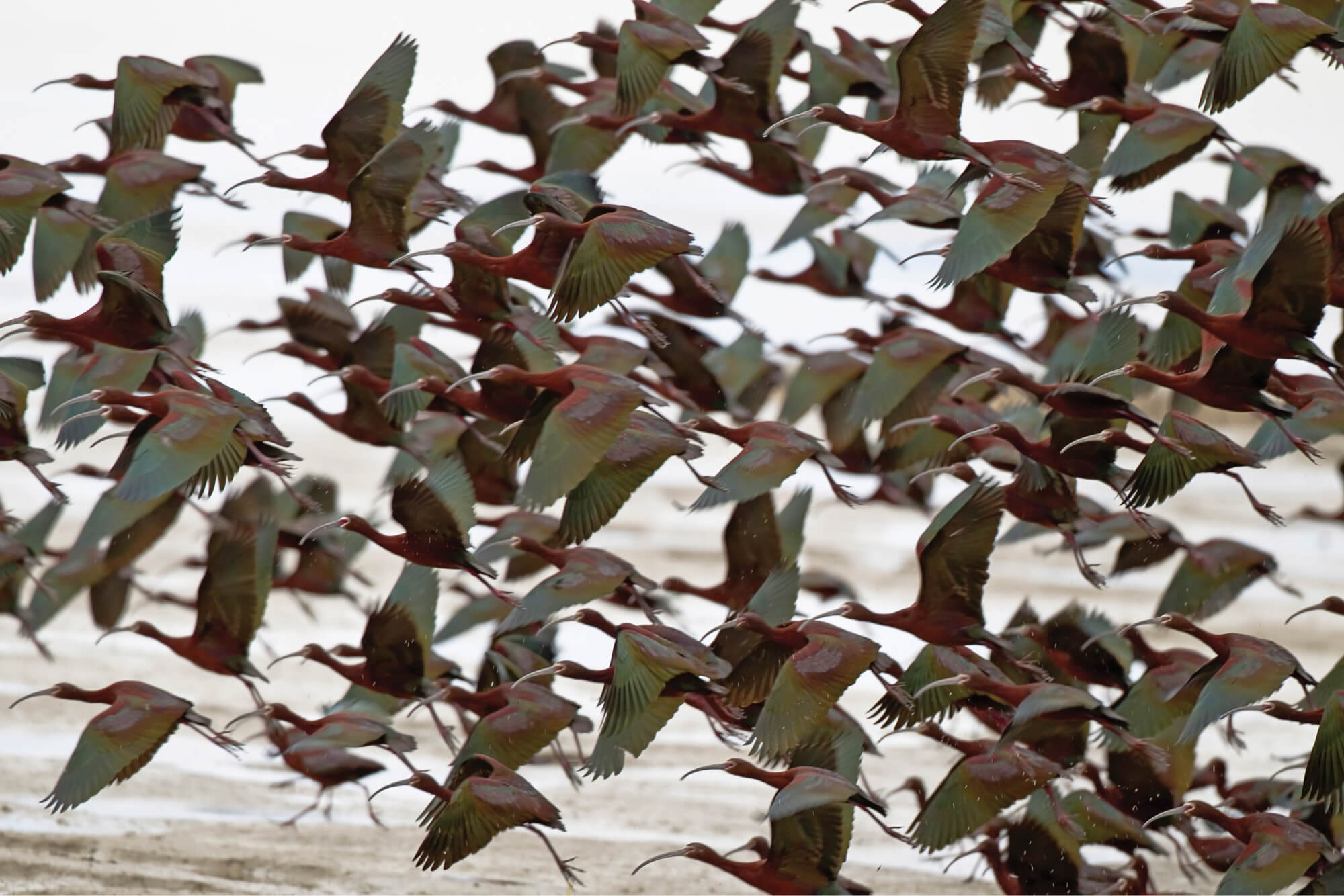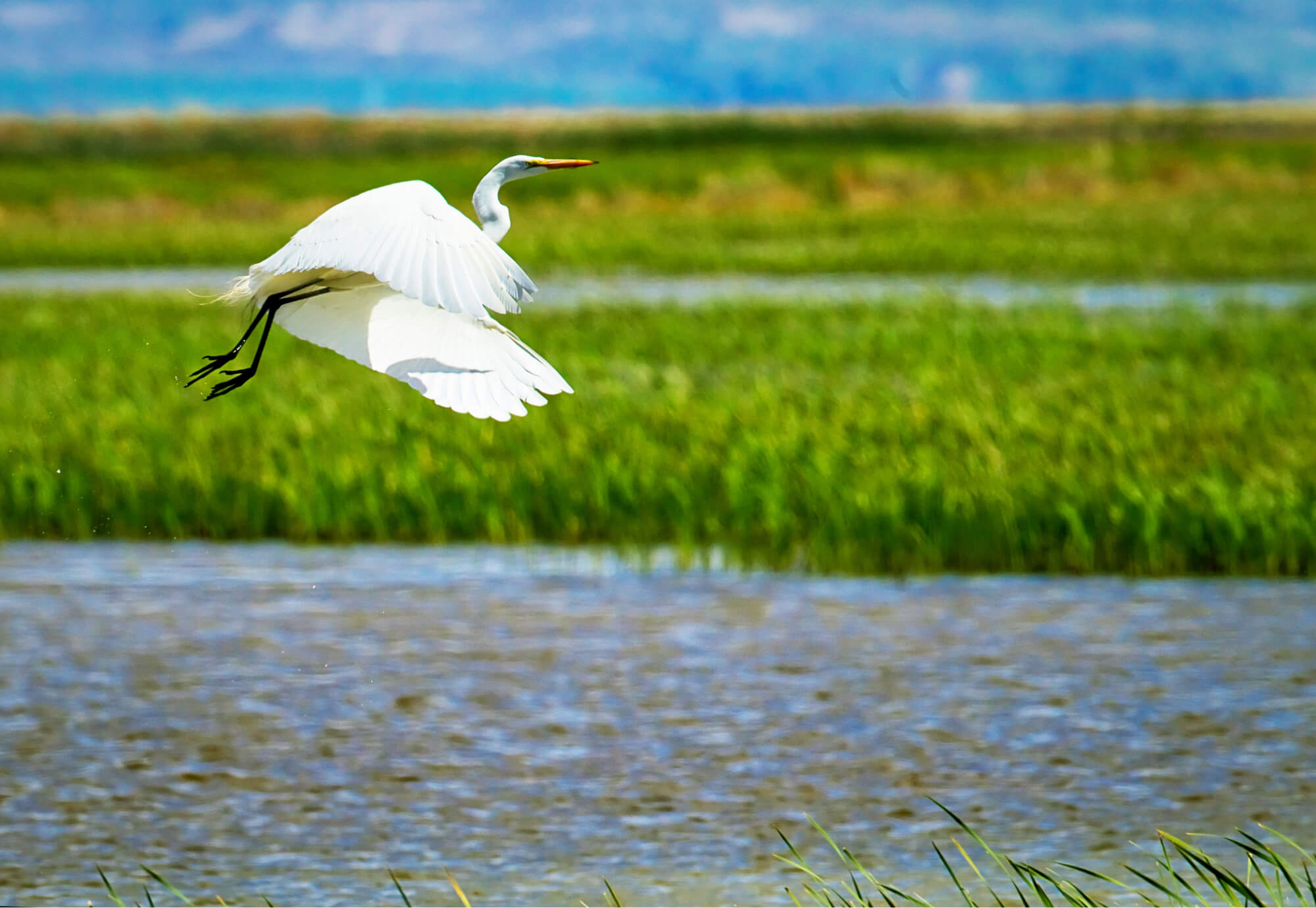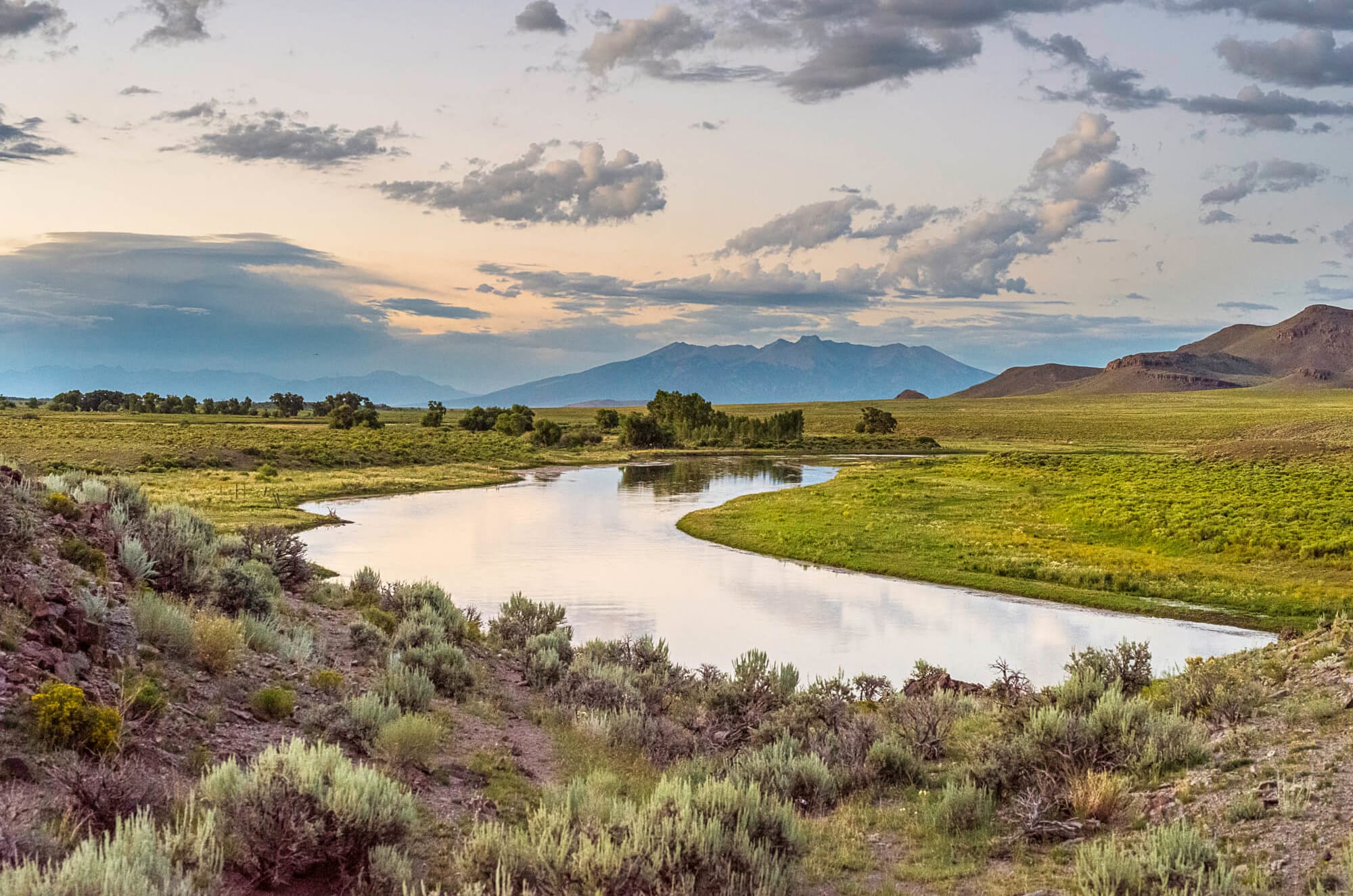On its journey to the Great Salt Lake, the Bear River’s 350-mile length takes one of the most circuitous river routes in America. Its giant, inverted “U” shape begins in Utah’s Uinta Mountains, then snakes north into Wyoming and Idaho, and back south into Utah to meet the Great Salt Lake.
Here, the marshes at the mouth of the Bear River are among the greatest producers of waterfowl in the country. In the middle of the desert, this freshwater oasis hosts a phenomenal gathering of birds to rest, feed, nest and rear their young. Set aside by the public in 1929 as the Bear River Migratory Bird Refuge, this area sees more than 200 species and millions of birds throughout the year, much to the delight of upwards of 50,000 people who visit each year.
Western Rivers Conservancy secured critical portions of this nationally significant wetland complex by acquiring two properties and conveying them to the U.S. Fish and Wildlife Service (USFWS) for addition to the refuge. Our first acquisition was a 696-acre property with excellent feeding and nesting habitat, located near the entrance to the refuge. This land was conveyed to the USFWS, which manages the 74,000-acre Refuge complex. The effort to restore wetland conditions on this property was initiated in partnership with Ducks Unlimited and Friends of the Bear River Refuge. Building on this first acquisition, Western Rivers Conservancy purchased a second, 580-acre property in 2011 that further expanded the refuge.
These properties enhance the offerings of the refuge by contributing diverse wetland habitat, including open water and sheltered grasslands. The projects conserve feeding, nesting and rearing areas for a tremendous array of waterfowl, including ducks, geese, egrets, avocets, tundra swan, American Pelican and black-necked stilts.
Critical support for our work on Bear River was provided by the S.D. Bechtel, Jr. Foundation, Stephen Bechtel Fund, Intermountain West Joint Venture, Rocky Mountain Power Foundation and Union Pacific Foundation.


